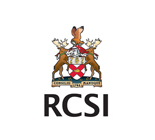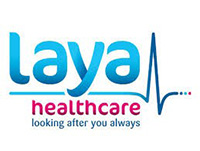Rhinoplasty

Rhinoplasty has evolved dramatically over the last few decades. The terms used to describe the procedures and indications are explained here.
Get a ConsultationUnderstanding the Terms.
Rhinoplasty: a surgery that changes the form (or shape) and function (breathing) of the nose.
Functional Rhinoplasty: The primary function of the nose is breathing and surgery that aims primarily to improve or restore this function is called a Functional Rhinoplasty. This surgery may also change the way the nose looks and this warrants due attention.
Cosmetic Rhinoplasty: surgery primarily to change the form of the nose for appearance alone. This procedure may also change the way the nose functions and due attention is given to acheive optimum function while improving the appearance.
Open Approach: this approach leaves an external scar on the columella but gives an advantage of improved access which may be necessary in some cases. During your consultation with your surgeon you will be shown examples of healed scars to allow you to make an educated decision regarding the approach.
Closed Approac: operation through nares (nose openings) with no external scars.
Tip Plasty: usually a cosmetic surgery to modify the shape of the tip of the nose. Less often tip surgery is performed to restore function when the sides of nose collapse inwards with deep breaths.
Nasal Valve Surgery: to improve breathing when the nasal valves are dysfunctional or compromised. These complex areas are best demonstrated on a computer screen, during your consultation, if it is of importance in your specific case.
Paediatric Rhinoplasty: rhinoplasty in a young person using conservative guidelines when surgery is performed before the pubertal growth rates have slowed. The author has a special interest and expertise in this area.
Nasal bone fractures: injury to nasal bones may necessitate formal rhinoplasty in the future, if not addressed adequately in time.
Acute Septal cartilage fractures: nose injury leading to nasal cartilage dislocation or fracture. Septoplasty may be required if nasal obstruction persists. This is routinely performed after 6-12 months (interval septoplasty) allowing the scar tissues to mature and to allow predictable results after correction.
Septoplasty: surgery for correction of nasal blockage caused by bent septal cartilage. Septum is the party wall that divides the nose into right and left cavities.
Acute Septoplasty: When septoplasty is performed before the cartilage scars have stabilised. Revision surgery is more likely after acute septoplasty as the results are not predictable. When successful, it avoids the interval of nine months with a blocked nose.
External approach Septoplasty: Access to the dorsal septum is improved with the external approach through a columella incision. This leaves a columellar scar but allows better access to improve breathing and control of nasal valve areas.
Extracorporeal Septoplasty: A technique where the midline cartilagenous components of the nasal septum are removed outside the nose, refashioned and replaced back into the nose. This is a sophisticated technique which is employed only in the most difficult cases of septoplasty.
Endoscopic Septoplasty: A Septoplasty performed with the help of an endoscope for improved optics, teaching and documentation.
Who Does Rhinoplasty?
Rhinoplasty is typically performed by ENT Surgeons, the Plastic Surgeons and the Maxillo-Facial Surgeons.
Facial Plastic Surgeons are surgeons who initially trained as one of the above three disciplines and then have undergone Fellowship training in Facial Plastic Surgery. Not all Facial Plastic Surgeons have Rhinoplasty as their foremost area of expertise.
A few of the above four recognize what it takes to acheive safe and predictable results in Rhinoplasty and devote most of their time to the learning and teaching of this challanging surgery.
Each of these specialties brings a unique perspective and the science of rhinoplasty is enriched by it. The surgeons who pursue expertise in this surgery often meet at the rhinoplasty workshops and conferences to learn from each other. Rhinoplasty is regarded as the most difficult amongst the Facial Plastic Surgery procedures, to master.
On a golf course one can get lucky and hit a ‘hole in one’.
The Masters who have devoted time and honed their skills over decades, will hit birdies all day long. They are also more equipped to rescue an occasional, inevitable, bad shot!
Who is a Candidate
Anyone who has thought about changing the way their nose looks or functions, is a candidate for a consultation with a specialist.
In keeping with good ethical practice, the author accepts patients for consultation only when a referral letter is produced.
Shape of the nose
The key issue about the candidature is that the person seeking a cosmetic surgical procedure on their nose is made fully aware of the risks and limitations of the procedure. It is not a temporary change and poor results are difficult to hide. Revision surgery, though possible, is progressively more difficult and less predictable. Revision surgery may be required in about 1 in 10 cases after allowing a healing period of about nine to twelve months.

Minor asymmetries can change the way a face appears. In the above example the face of the model in the middle has been reconstructed using two right halves in the first picture and then two left halves in the last one. The two reconstruted examples look quite different.
Gross symmetry and harmony with the rest of face, body & ethnicity defines what is normal. Detailed measurements and geometry is good for understanding the facial features and at the planning stages but not practical in theatre. A surgeon is generally guided by what is harmonious in their view. Durning your consultations the author ensures that your ambitions and his views match.
Children
Yes, but with extreme caution, employing child-specific guidelines in a select few where denying surgery is the poorer option in medium and long term. Effects on mid-facial growth are a concern if certain areas of the nose are disturbed. The author has a special interest in this group of patients and has undertaken research to understand the conservative techniques required when operating on a growing nose.













